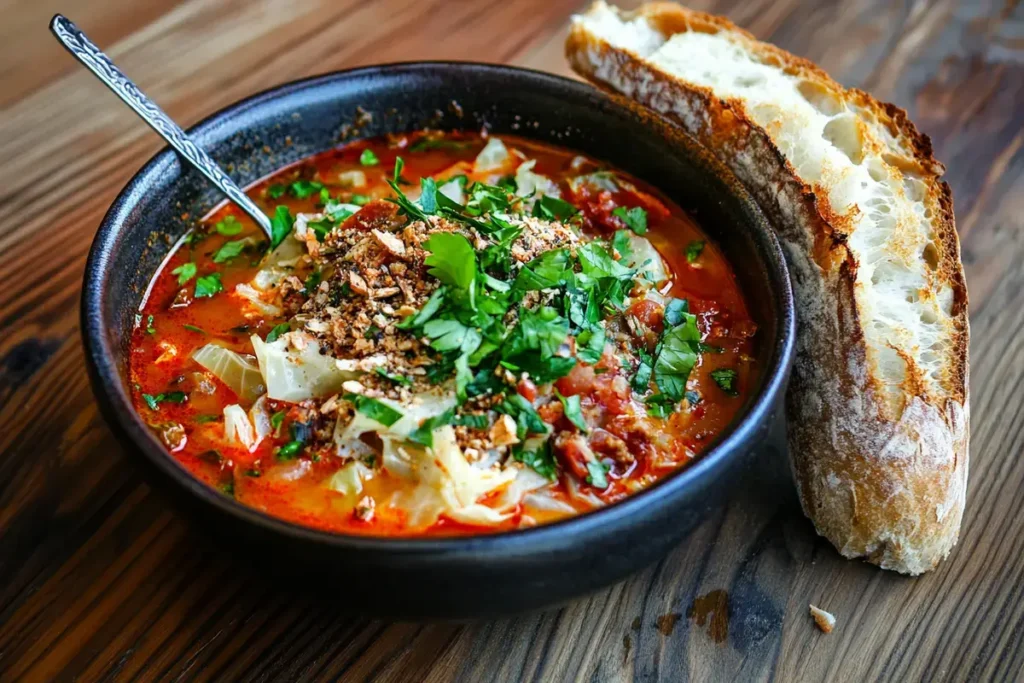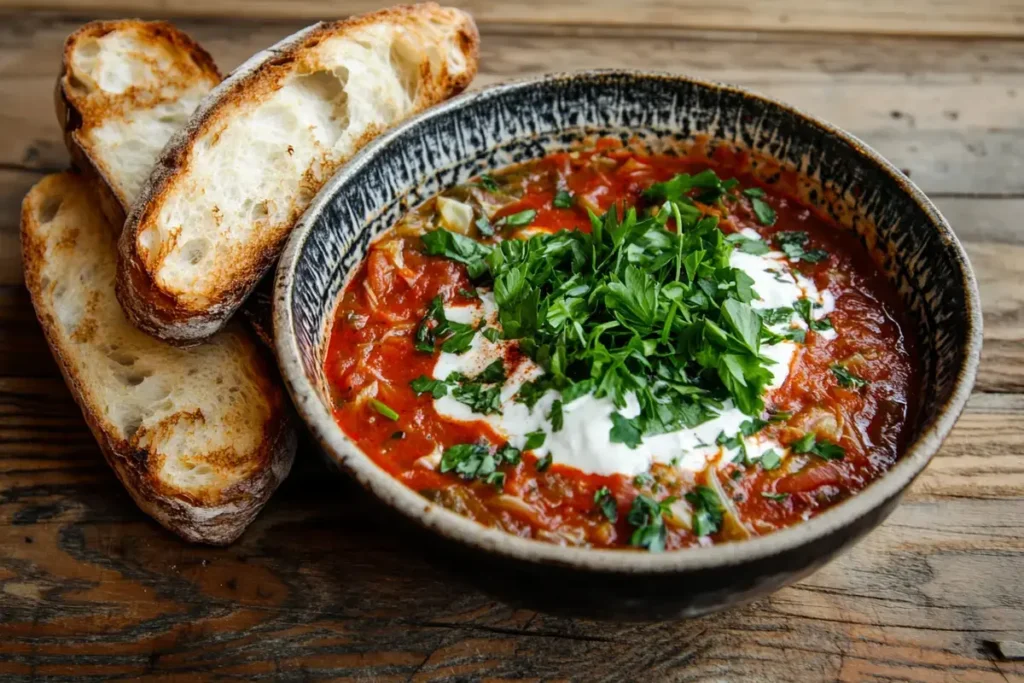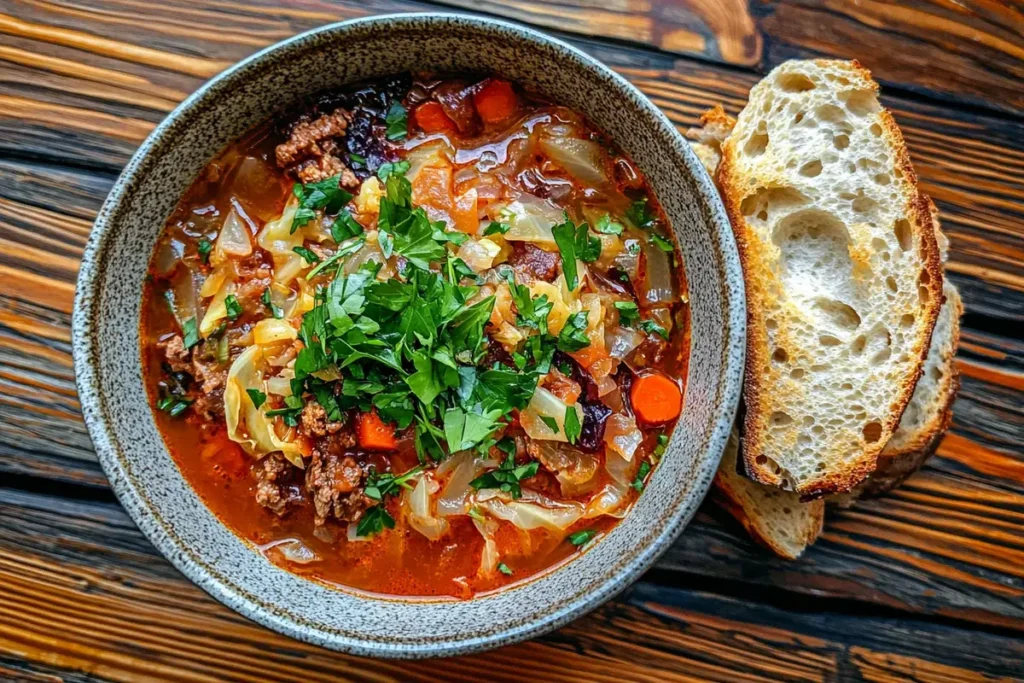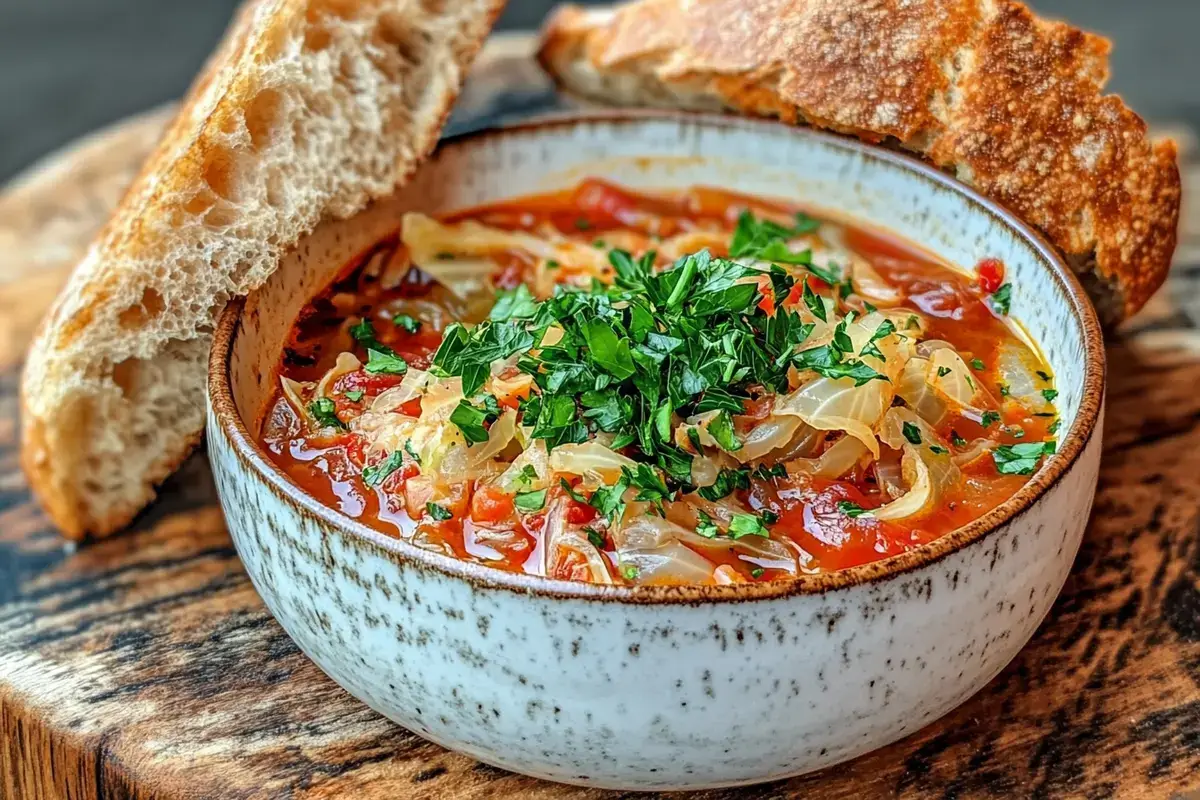After receiving dozens of emails this month from frustrated home cooks across America asking why their cabbage soup tastes like “hot water with vegetables,” I knew it was time to address this common kitchen dilemma. Having taught soup-making classes in my Portland studio for over a decade, I can confidently say that bland cabbage soup is entirely fixable , and preventable , once you understand what’s going wrong.
The Missing Foundation: Proper Sautéing Technique
The number one mistake I see home cooks make is dumping raw vegetables directly into water or broth. This is your first flavor crime. Every successful soup starts with building a flavor base through proper sautéing. Heat 2-3 tablespoons of olive oil or butter in your pot first, then sauté your diced onions until translucent and slightly caramelized, about 5-7 minutes.
Add minced garlic, celery, and carrots, cooking another 3-4 minutes until fragrant. This process, known as sweating the vegetables, releases their natural sugars and creates complex flavor compounds through the Maillard reaction. Only after this crucial step should you add your cabbage and liquids.

The Broth Problem: Water Isn’t Enough
Using plain water is essentially guaranteeing a bland result. Quality broth makes the difference between forgettable and memorable soup. I recommend using homemade bone broth when possible, but store-bought works if you choose wisely. Look for low-sodium versions so you can control the salt level yourself.
Here in the Pacific Northwest, many local butchers sell house-made bone broth that’s perfect for soup bases. If you must use water, enhance it with Better Than Bouillon paste, miso paste, or at minimum, quality bouillon cubes. For every 8 cups of liquid, I add at least 2 tablespoons of tomato paste for depth and umami.
Seasoning Sins: Too Little, Too Late
Most bland cabbage soup suffers from chronic under-seasoning. Salt isn’t just about making things “salty” , it’s a flavor enhancer that makes every ingredient taste more like itself. Start with 1 teaspoon of kosher salt per quart of soup, then adjust upward.
But salt alone won’t save your soup. Layer your seasonings throughout cooking:
- Bay leaves (2-3) added with the broth
- Fresh thyme or dried Italian seasoning (2 teaspoons)
- Smoked paprika (1 tablespoon) for depth
- Black pepper (1 teaspoon, freshly ground)
- Red pepper flakes (½ teaspoon) for subtle heat
The biggest mistake? Adding seasonings only at the end. Season at every stage when sautéing, when adding broth, and yes, again before serving.
The Acid Factor: Your Secret Weapon
Professional chefs know that acid brightens and balances flavors, yet home cooks often skip this crucial component. A bland pot of cabbage soup can be completely transformed with 2-3 tablespoons of apple cider vinegar or fresh lemon juice added in the last 10 minutes of cooking.
In my Seattle restaurant days, we’d finish every soup with acid. For cabbage soup specifically, I prefer apple cider vinegar as it complements the sweetness of cooked cabbage. Some cooks add a can of diced tomatoes with their juice, which provides both acid and umami.

Temperature and Time: Patience Pays Off
Cabbage soup needs time to develop flavor at least 45 minutes of gentle simmering, preferably 60-90 minutes. The longer cooking time allows flavors to meld and intensify. Keep it at a gentle simmer, not a rolling boil, which can make vegetables mushy and actually diminish flavor.
I’ve noticed many Midwest cooks, particularly those with Eastern European heritage, understand this intuitively. They’ll let their cabbage soup simmer for hours, sometimes even making it a day ahead. The soup invariably tastes better the next day after flavors have had time to marry.
The Umami Boost: Modern Solutions
Don’t overlook umami-rich ingredients that can rescue bland soup:
- Worcestershire sauce (1-2 tablespoons)
- Soy sauce or tamari (1 tablespoon)
- Parmesan rind (added during simmering)
- Anchovy paste (1 teaspoon , trust me, you won’t taste fish)
- Nutritional yeast (2 tablespoons for vegan versions)
These ingredients add depth without overwhelming the cabbage flavor. My Baltimore-born grandmother always added a dash of Worcestershire to her cabbage soup, a trick I still use today.
Final Fixes Before Serving
Taste your soup 10 minutes before serving. If it’s still bland, try these quick fixes:
- Add more salt in small increments
- Stir in fresh herbs like parsley or dill
- Drizzle quality olive oil on top
- Add a splash of hot sauce or vinegar

FAQs
Q: Can I fix already-made bland cabbage soup?
A: Yes! Add acid, salt, and simmer with additional seasonings for 20 minutes.
Q: Should I use green or purple cabbage?
A: Green cabbage is traditional and milder; purple adds color but can taste slightly bitter.
Q: Why does restaurant cabbage soup taste better?
A: Restaurants use more salt, butter, and often add MSG or soup bases for enhanced flavor.
Q: How much salt should cabbage soup have?
A: Roughly 1-1.5 teaspoons per quart, adjusted to taste and dietary needs.

